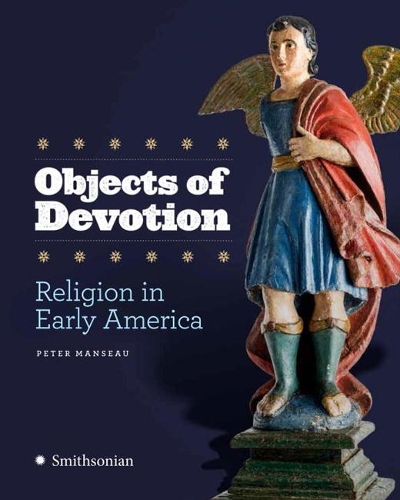
Objects of Devotion: Religion in Early America
(Hardback)
Publishing Details
Objects of Devotion: Religion in Early America
By (Author) Peter Manseau
Smithsonian Books
Smithsonian Books
18th May 2017
United States
Classifications
General
Non Fiction
History of the Americas
Christianity
History of religion
277.3/07
Physical Properties
Hardback
260
Width 210mm, Height 270mm
1g
Description
Objects of Devotion- Religion in Early America tells the story of religion in the United States through the material culture of diverse spiritual pursuits in the nation's colonial period and the early republic. The beautiful companion volume to a Smithsonian National Museum of American History exhibition, the book explores the wide range of religious traditions vying for adherents, acceptance, and a prominent place in the public square from the 1630s to the 1840s. The original thirteen states were home to approximately three thousand churches and more than a dozen Christian denominations, including Anglicans, Baptists, Catholics, Congregationalists, Lutherans, Methodists, Presbyterians, and Quakers. A variety of other faiths also could be found, including Judaism, Islam, traditional African practices, and Native American beliefs. As a result, America became known throughout the world as a place where, in theory, if not always in practice, all are free to believe and worship as they choose. The featured objects include an 1814 Revere and Sons church bell from Salem, the Jefferson Bible, wampum beads, a 1654 Torah scroll brought to the New World, the only known religious text written by an enslaved African Muslim, and other revelatory artifacts. Together these treasures illustrate how religious ideas have shaped the country and how the treatment and practice of religion have changed over time. Objects of Devotion emphasizes how religion can be understood through the objects, both rare and everyday, around which Americans of every generation have organized their communities and built this nation.
Reviews
PUBLISHERS WEEKLY, Starred review
The subtitle for this engrossing work is also the name of the first religion-oriented exhibit at the Smithsonian Institutions National Museum of American History. This landmark study of the role of religion in the early history of the U.S.from the mid-17th century to the mid-19th centurydemonstrates how deeply religion influenced Americas founders and their descendants. Most readers will be unable to visit the exhibit itself, but they will find much to inspire them in this lushly illustrated volume. Readers will be surprised to find a letter from George Washington to the Hebrew congregations; others will be amazed to learn that Thomas Jefferson owned a copy of the Quran. Each of the articles is accompanied by a photo of the historical artifact that informs the chapters subject. Individually, the exhibits describe aspects of the role religion played in our ancestors lives; together they form a testament to the passion the nations founders displayed for spirituality. This is a wonderful, inspiring collection.(May)
Author Bio
PETER MANSEAU is a Smithsonian fellow who holds a doctorate from Georgetown University. He is the author of numerous books and writes frequently on religion and history for publications including The New York Times, The Atlantic, and The Wall Street Journal.
